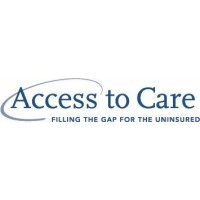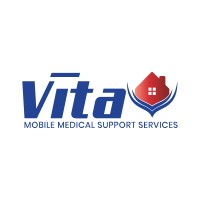Company Details
san-diego-imperial-counties-developmental-services-inc-
604
1,994
923
sdrc.org
0
THE_1573022
In-progress

The San Diego Regional Center Company CyberSecurity Posture
sdrc.orgThe San Diego Regional Center is one of 21 Regional Centers for persons with developmental disabilities in the State of California. The centers were established in 1965 under legislation sponsored by Assemblyman Frank Lanterman. The Lanterman Act became effective in 1969 and established the statewide Regional Center network. The Legislation later expanded the populations served to include persons with intellectual disabilities, cerebral palsy, epilepsy, autism, and other disabling conditions similar to intellectual disabilities. The San Diego Regional Center was the third Regional Center established in California. It currently serves over 40,000 people living in San Diego and Imperial Counties.
Company Details
san-diego-imperial-counties-developmental-services-inc-
604
1,994
923
sdrc.org
0
THE_1573022
In-progress
Between 750 and 799

 SDRC Global Score (TPRM)
SDRC Global Score (TPRM)XXXX



No incidents recorded for The San Diego Regional Center in 2025.
No incidents recorded for The San Diego Regional Center in 2025.
No incidents recorded for The San Diego Regional Center in 2025.
SDRC cyber incidents detection timeline including parent company and subsidiaries

The San Diego Regional Center is one of 21 Regional Centers for persons with developmental disabilities in the State of California. The centers were established in 1965 under legislation sponsored by Assemblyman Frank Lanterman. The Lanterman Act became effective in 1969 and established the statewide Regional Center network. The Legislation later expanded the populations served to include persons with intellectual disabilities, cerebral palsy, epilepsy, autism, and other disabling conditions similar to intellectual disabilities. The San Diego Regional Center was the third Regional Center established in California. It currently serves over 40,000 people living in San Diego and Imperial Counties.


Access to Care is a non-profit primary health care program for low-income, uninsured, and under-insured residents of suburban Cook County and northwest Chicago. The benefits of our program are primary care doctor's visits for $5, basic labs and x-ray for $5, and prescription medications from $15

Community Action Partnership of Utah (CAP Utah) is the statewide association of the Community Action Agencies in Utah. The Community Action Agencies in Utah envision an end to poverty. Our member agencies work toward this vision every day as we provide services to low-income families and individua

A Registered Massage Therapy clinic located in Huntsville, Muskoka Ontario. All of our therapists are fully accredited and have many years of experience. You'll be in good hands! We offer a variety of treatment types including: Traditional Massage and Hot Stone Massage, Cupping Massage, Deep Tissue,

As a national mobile phlebotomy provider, Vita Mobile is committed to delivering the highest quality of mobile medical care to all patients. Vita Mobile is the bridge connecting companies and employees, patients, and their healthcare needs. With years of proven experience in mobile medical support

Touchpointe is the #1 resource for those diagnosed with cancer. We are fully committed to providing comprehensive answers and unwavering support throughout every stage of their wellness journey. At Touchpointe, we understand the overwhelming challenges and uncertainties that come with a cancer dia

Are you looking to be part of a professional team focused on providing an exceptional experience for residents – one that is resident-centered to create a premier lifestyle? As part of the Ginger Cove team, you will utilize your best talents and skills to support the overall wellness of our communit
.png)
Lance Larson, Ph.D., a cybersecurity specialist whose multiple community roles include San Diego State University professor, has been named...
SAN DIEGO – Resources abound for individuals and organizations working to improve their cybersecurity posture. As Cybersecurity Awareness...
This recognition from the San Diego Business Journal and the San Diego Cybersecurity Center of Excellence highlights SDCOE's leadership in...
Cal State San Marcos joined elected officials and industry leaders from the cybersecurity sector and higher education Wednesday in an event...
SAN DIEGO – Brendan Daly talks about the need for a “human firewall” when it comes to securing the region's critical infrastructure.
SAN DIEGO – Seemingly small actions can make a big difference in keeping cyber predators at bay. Taking care of details and individual...
San Diego-based tech company to debut interactive gameday experiences and invest in future-ready career development programs for Aztec...
Former Vice Admiral Timothy “T.J.” White has been chosen to helm the new state-level cybersecurity agency, Gov.
Nearly 19,000 state and local government offices could lose access to vital cyber threat intelligence and affordable security tools by the...

Explore insights on cybersecurity incidents, risk posture, and Rankiteo's assessments.
The official website of The San Diego Regional Center is https://www.sdrc.org/.
According to Rankiteo, The San Diego Regional Center’s AI-generated cybersecurity score is 766, reflecting their Fair security posture.
According to Rankiteo, The San Diego Regional Center currently holds 0 security badges, indicating that no recognized compliance certifications are currently verified for the organization.
According to Rankiteo, The San Diego Regional Center is not certified under SOC 2 Type 1.
According to Rankiteo, The San Diego Regional Center does not hold a SOC 2 Type 2 certification.
According to Rankiteo, The San Diego Regional Center is not listed as GDPR compliant.
According to Rankiteo, The San Diego Regional Center does not currently maintain PCI DSS compliance.
According to Rankiteo, The San Diego Regional Center is not compliant with HIPAA regulations.
According to Rankiteo,The San Diego Regional Center is not certified under ISO 27001, indicating the absence of a formally recognized information security management framework.
The San Diego Regional Center operates primarily in the Health and Human Services industry.
The San Diego Regional Center employs approximately 604 people worldwide.
The San Diego Regional Center presently has no subsidiaries across any sectors.
The San Diego Regional Center’s official LinkedIn profile has approximately 1,994 followers.
The San Diego Regional Center is classified under the NAICS code 923, which corresponds to Administration of Human Resource Programs.
No, The San Diego Regional Center does not have a profile on Crunchbase.
Yes, The San Diego Regional Center maintains an official LinkedIn profile, which is actively utilized for branding and talent engagement, which can be accessed here: https://www.linkedin.com/company/san-diego-imperial-counties-developmental-services-inc-.
As of November 27, 2025, Rankiteo reports that The San Diego Regional Center has not experienced any cybersecurity incidents.
The San Diego Regional Center has an estimated 403 peer or competitor companies worldwide.
Total Incidents: According to Rankiteo, The San Diego Regional Center has faced 0 incidents in the past.
Incident Types: The types of cybersecurity incidents that have occurred include .
.png)
Angular is a development platform for building mobile and desktop web applications using TypeScript/JavaScript and other languages. Prior to versions 19.2.16, 20.3.14, and 21.0.1, there is a XSRF token leakage via protocol-relative URLs in angular HTTP clients. The vulnerability is a Credential Leak by App Logic that leads to the unauthorized disclosure of the Cross-Site Request Forgery (XSRF) token to an attacker-controlled domain. Angular's HttpClient has a built-in XSRF protection mechanism that works by checking if a request URL starts with a protocol (http:// or https://) to determine if it is cross-origin. If the URL starts with protocol-relative URL (//), it is incorrectly treated as a same-origin request, and the XSRF token is automatically added to the X-XSRF-TOKEN header. This issue has been patched in versions 19.2.16, 20.3.14, and 21.0.1. A workaround for this issue involves avoiding using protocol-relative URLs (URLs starting with //) in HttpClient requests. All backend communication URLs should be hardcoded as relative paths (starting with a single /) or fully qualified, trusted absolute URLs.
Forge (also called `node-forge`) is a native implementation of Transport Layer Security in JavaScript. An Uncontrolled Recursion vulnerability in node-forge versions 1.3.1 and below enables remote, unauthenticated attackers to craft deep ASN.1 structures that trigger unbounded recursive parsing. This leads to a Denial-of-Service (DoS) via stack exhaustion when parsing untrusted DER inputs. This issue has been patched in version 1.3.2.
Forge (also called `node-forge`) is a native implementation of Transport Layer Security in JavaScript. An Integer Overflow vulnerability in node-forge versions 1.3.1 and below enables remote, unauthenticated attackers to craft ASN.1 structures containing OIDs with oversized arcs. These arcs may be decoded as smaller, trusted OIDs due to 32-bit bitwise truncation, enabling the bypass of downstream OID-based security decisions. This issue has been patched in version 1.3.2.
Suricata is a network IDS, IPS and NSM engine developed by the OISF (Open Information Security Foundation) and the Suricata community. Prior to versions 7.0.13 and 8.0.2, working with large buffers in Lua scripts can lead to a stack overflow. Users of Lua rules and output scripts may be affected when working with large buffers. This includes a rule passing a large buffer to a Lua script. This issue has been patched in versions 7.0.13 and 8.0.2. A workaround for this issue involves disabling Lua rules and output scripts, or making sure limits, such as stream.depth.reassembly and HTTP response body limits (response-body-limit), are set to less than half the stack size.
Suricata is a network IDS, IPS and NSM engine developed by the OISF (Open Information Security Foundation) and the Suricata community. In versions from 8.0.0 to before 8.0.2, a NULL dereference can occur when the entropy keyword is used in conjunction with base64_data. This issue has been patched in version 8.0.2. A workaround involves disabling rules that use entropy in conjunction with base64_data.

Get company history
















Every week, Rankiteo analyzes billions of signals to give organizations a sharper, faster view of emerging risks. With deeper, more actionable intelligence at their fingertips, security teams can outpace threat actors, respond instantly to Zero-Day attacks, and dramatically shrink their risk exposure window.
Identify exposed access points, detect misconfigured SSL certificates, and uncover vulnerabilities across the network infrastructure.
Gain visibility into the software components used within an organization to detect vulnerabilities, manage risk, and ensure supply chain security.
Monitor and manage all IT assets and their configurations to ensure accurate, real-time visibility across the company's technology environment.
Leverage real-time insights on active threats, malware campaigns, and emerging vulnerabilities to proactively defend against evolving cyberattacks.




